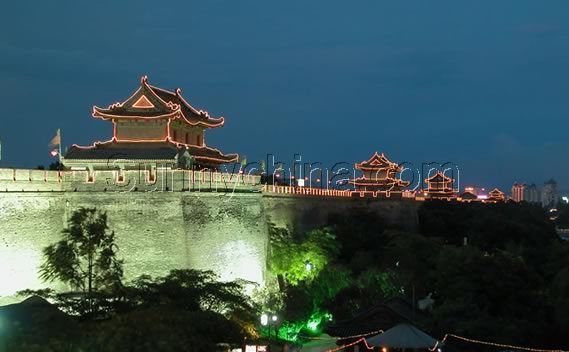『Xi'an』
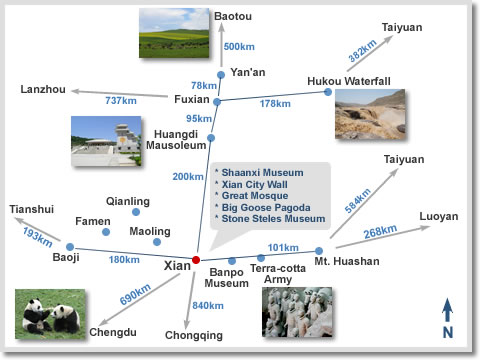
Xi’an,
once called Chang’an in ancient times, is one of the 6 great ancient
capitals in China. Spanning a period of more than 1,000 years, it served
intermittently as the capitals of 13 dynasties, including Zhou, Qin,
Han, Sui, Tang and other dynasties and a total of 73 emperors had ruled
china from there, for which it has been entitled the “the emperor’s city
from the beginning of time.”Early in the Han Dynasty, Xi’an was already
an important city for
international exchangebetween China and various countries, and it was
also the very starting point of the well-known “silk road”. The long
history has left Xi’an a rich cultural legacy. It is famous for her
scenic spots, beautiful natural environment and rich artistic treasures,
and is now one of the tourist attractions. the main tourist attractions
are mausoleum of Qinshihuang and his mighty army of terracotta warriors
and horses, as well as Huaqing hot spring. The other scenes and sights
include banpo village ruins, greater and lesser wild-goose pagodas, bell
tower and drum tower, city wall, Xingjiao temple, Famen temple, Shaanxi
history museum, Xi’an stele forest, and grand mosque.
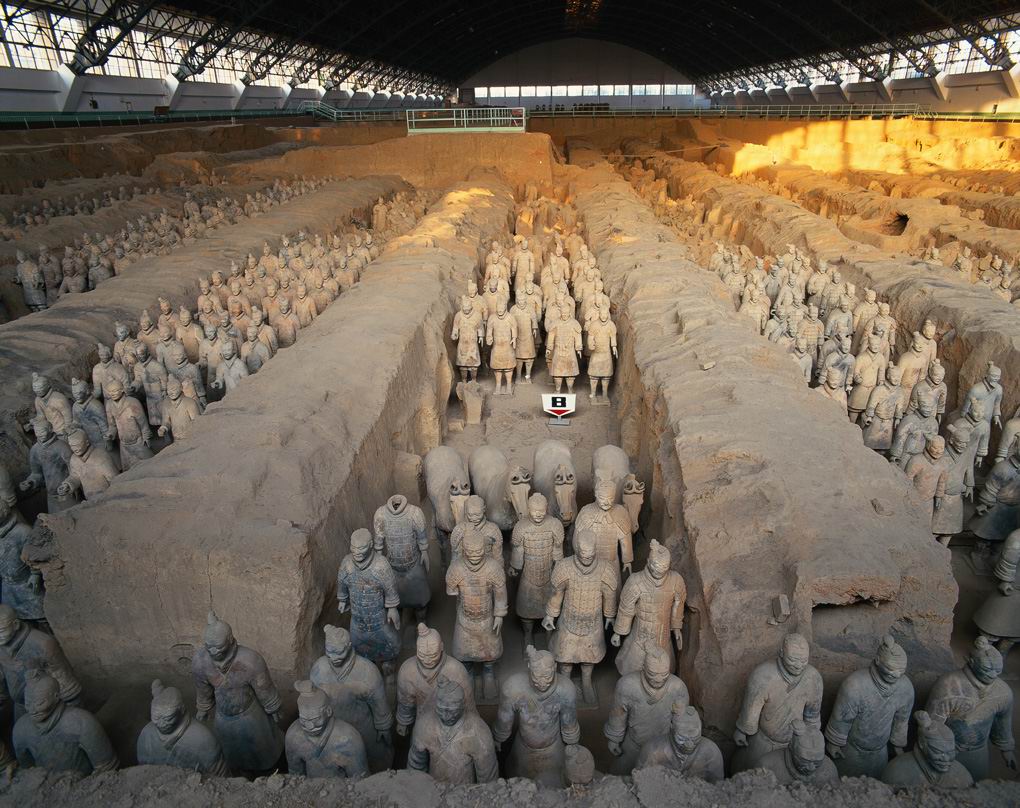
Terra Cotta Warriors
The
mausoleum of emperor Qin Shihuang (259-210bc) who was the first emperor
unified china and founded the fist dynasty under the feudalism, Cs
located at the foot of Lishan mountain, Shaanxi province. Covering an
area of 56.25 square kilometers, the mausoleum was designed according to
the capital then.
Siding with the mausoleum about 1.5
kilometers away east, it is the vaults of the Terra-cotta Warriors and
Horses, the mighty army of the emperor and the most popular tourist attraction
of Shaanxi. An in-site museum has been built over these pits, covering a
floorspace of 20,000 square meters and displaying 8,000 life-size
terracotta warriors, 100 or so chariots and 30,000 weapons. It is known
as the “ the eighth wonder of the world”. In 1987, the united nations’
educational, scientific and cultural organization (unesco) inscribed the
mausoleum of the emperor Qin Shihuang and Terra-cotta Warriors on the
world heritage list.
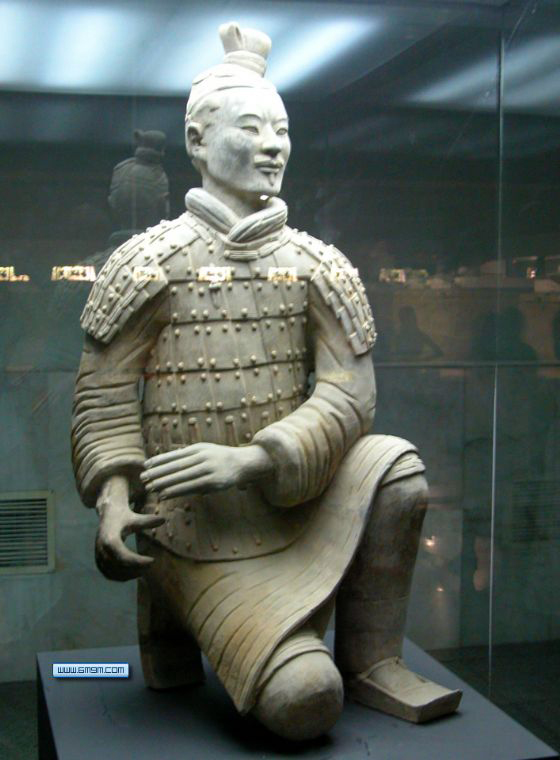
The Wild Goose Tower
Located on the south of Xi’an, the famous pagoda stands in what was formerly called “the temple of great maternal grace” or ci’en temple in Chinese. The original pagoda was built in 652 ad to house the buddhist scriptures brought back from India by the traveling monk xuan zang. Standing on a terrace, the big wild goose pagoda looks impressive. It is seven-story building, with a brick-wood structure and about 64 meters heigh. It offers a full view of the ancient Xi’an city when one climbs to the top of the pagoda.
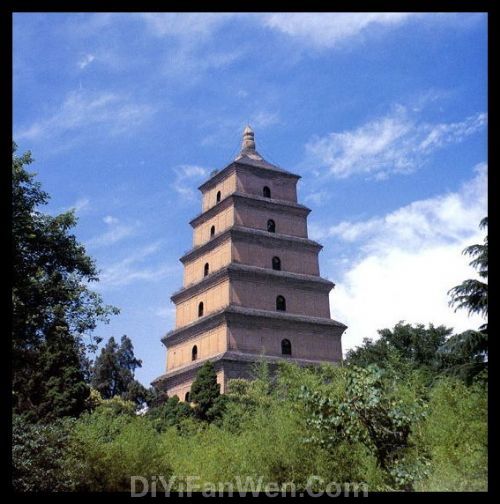
HuaShan Mountain
Huashan is located in huayin
county, Shanxi province. It is the western mountain of the five sacred
mountains. It is second highest to the northern mountain – huashan is
praised as "the first odd mountain in the world". Its craggedness is
superior to the other four sacred mountains.
Huashan boasts five imposing peaks with sheer precipices and overhanging rocks: the east one is called the peak of the rising sun which is the best location to view sunrising; the north one, the peak of cloud terrace which is famous for cliffs on its three sides; the west one, the peak of lotus; the south one, the peak of wild geese which is the main peak and also the steepest of huashan with an elevation of 2,083 meters; and the central one, the peak of the jade maiden, which links the east, west and south peaks. each presents a unique scenic beauty, surrounded by over 70 minor peaks.
Places of historical interest and scenic spots: towers, caves, stone steps, temples and pavilions can be found everywhere. The cloud-enshrouded cliff path, the sculptured rocky cliff, the floating-in-the-air somersault cliff, the cliff-excavated thousand-foot precipice with 370-odd stone steps, the hundred-foot valley, the laojun's furrow with 570-odd stone steps, the ear-touching cliff, the up-the-heaven's ladder and so on, are all marvelous views of precipitous and perilous cliff paths.
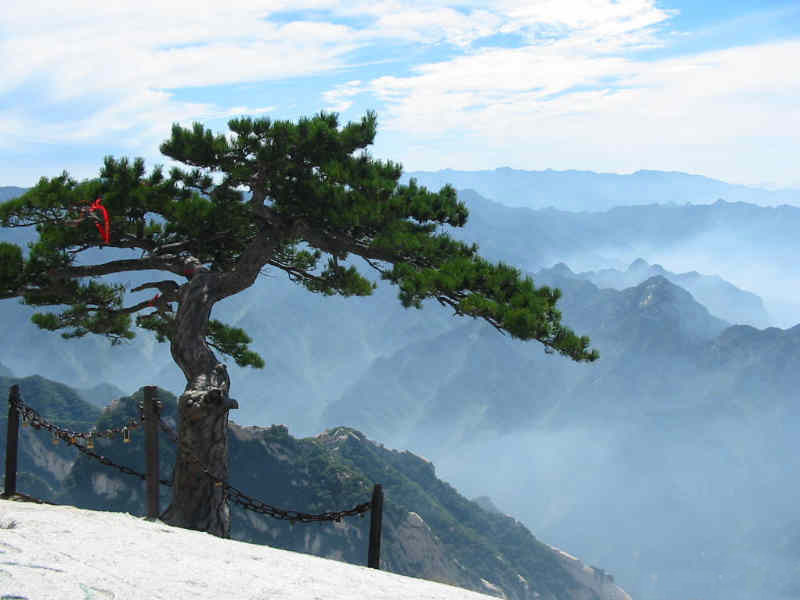
Imperial Tombs
Qinshihuang’s mausoleum is not the
only imperial necropolis left in xi’an. being the chinese capital
during a succession of dynasties, the land is actually studded with
imperial tombs. To name a few: Changling, situated east of Xianyang, was
the tomb for Liubang, the founder of the han dynasty; maoling, 15 km
east of xingping county, is the largest of all the Western Han imperial
tombs in Shaanxi, and there buried the remains of the all-mighty emperor
Wu. maoling museum was established in 1987 near the tomb of huo qubin, a
major Han general. Liyuan, or called the emperor Gaozu of Tang Dynasty,
had his tomb built east of
sanyuan county, and named it Xianling. the Zhaoling,situated to the northeast of Liquan county, belonged to Li Shimin, the
emperor taizong of Tang Dynasty. Buried in the Qianling on the
Liangshan mountain north of Qianxian county were the remains of Tang
emperor Gaozong and his wife, empress Wu Zetian. The tomb was actually
tunneled into the rocky mountain. Some of the surface structures and
large numbers of stone men, animals and ornamental pillars are still
standing there. The tailing, to the northeast of Pucheng county, was the
tomb for Lilongji, the Tang emperor Xuanzong.
The Ancient City Wall
Xi’an is proud of the only city wall that remains intact to this days in china. built during the early Ming Dynasty on the basis of the Tang imperial city of Chang’an, the city wall stretches out in a rectangular shape and is about 13.7 km in circumference. This wall stands 12 meters high, 12-14 meters wide at the top and 15-18 meters wide at the base. A total of 5,894 crenels are built along the outer edge of the wall, each of its for corners is topped by a turret, and a main gateway is built into each side of the wall. The top of the wall has been converted into a promenade, so that visitors can take a stroll on the wall while feasting their eyes on the scenery in sight.
